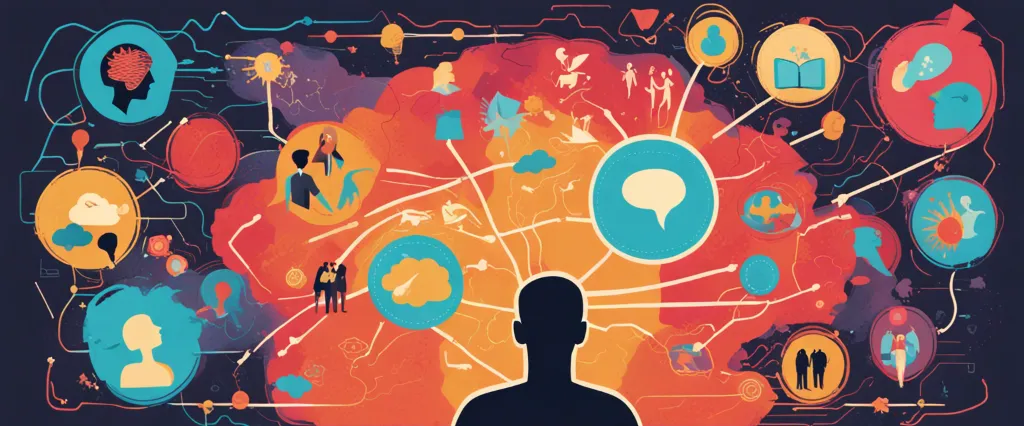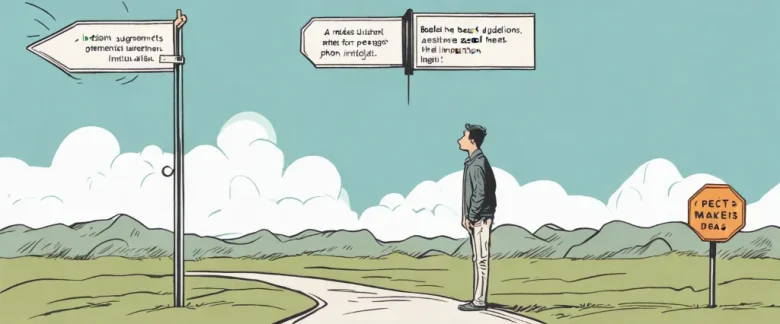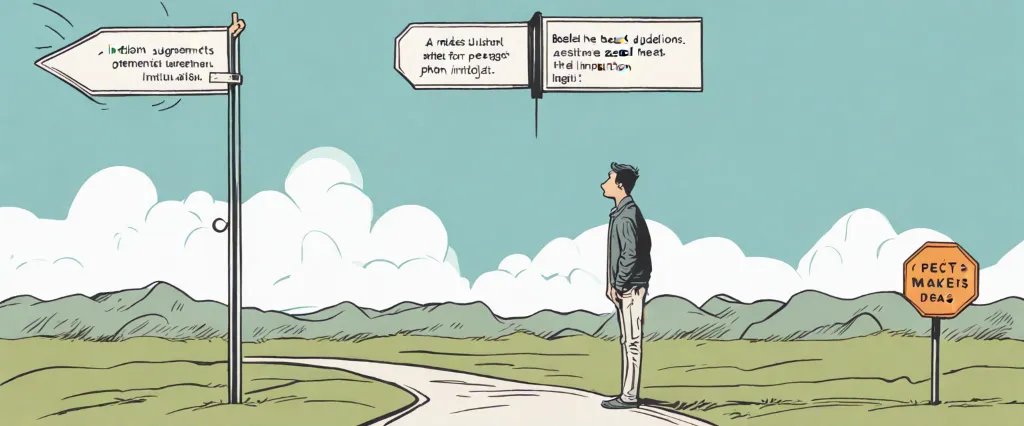In Rebel Ideas, Matthew Syed explores the power of diverse thinking and challenges conventional wisdom by highlighting the critical role of cognitive diversity in the modern world. Through captivating stories and compelling research, Syed illuminates how breakthroughs, innovations, and progress have often emerged from the clash of different perspectives. As a British journalist, author, and former Olympic table tennis player, Syed brings a unique blend of insights from his own experiences and expertise in human performance. Renowned for his best-selling books such as Bounce and Black Box Thinking, Syed aims to inspire readers to embrace diverse viewpoints and harness the collective power of rebel ideas.
Chapter 1: The Power of Cognitive Diversity
Chapter 1: The Power of Cognitive Diversity of the book Rebel Ideas by Matthew Syed explores the concept of cognitive diversity and its benefits in problem-solving and decision-making processes. Syed emphasizes the importance of embracing a range of perspectives, backgrounds, and experiences to foster innovation and creativity.
The chapter begins by highlighting historical examples where cognitive diversity played a crucial role. Syed discusses the success of the Manhattan Project, where a diverse group of scientists with varied expertise collaborated to develop the atomic bomb. The chapter also delves into the ill-fated decision-making process of NASA leading up to the Challenger disaster, where a lack of cognitive diversity within the organization hindered effective problem solving.
Syed introduces the concept of the “cognitive shadow,” which refers to the limitations of our own thinking due to our biases, blind spots, and limited viewpoints. He argues that embracing cognitive diversity can help organizations to break free from these limitations, exposing blind spots and enhancing the quality of decision-making.
The chapter further explores how cognitive diversity emerges from a mix of factors such as personalities, cultural backgrounds, and cognitive styles. Syed provides examples of successful organizations that harness cognitive diversity, such as Pixar and the intelligence services, where cross-functional teams with different perspectives collaborate effectively to produce outstanding results.
Overall, Chapter 1 highlights the benefits of cognitive diversity, demonstrating that by valuing and leveraging a range of viewpoints, organizations can enhance problem-solving abilities, decision-making processes, and foster innovation. By embracing cognitive diversity, organizations can break free from the limitations of their own thinking and unleash the power of collective intelligence.
Chapter 2: Unconscious Bias and Stereotypes
Chapter 2 of “Rebel Ideas” by Matthew Syed delves into the concepts of unconscious bias and stereotypes and their impact on decision-making and innovation. Syed argues that our brains are hardwired to categorize and simplify information, leading to the creation of unconscious biases and stereotypes that affect our perceptions and judgments.
He begins by discussing the infamous experiments of social psychologists, such as Muzafer Sherif and Henri Tajfel, who demonstrated how easily bias and stereotypes can be created. For instance, Sherif’s Robbers Cave experiment showed how simple divisions between groups can lead to deeply ingrained prejudices. Tajfel’s minimal group paradigm revealed how people tend to favor their own group even when it is created arbitrarily.
Syed suggests that this tribalism stems from our evolutionary history when humans lived in small, interconnected groups that often clashed with others. However, in our increasingly interconnected world, these biases and stereotypes can hinder progress and innovation. He highlights several examples to illustrate this point, including the lack of diversity in tech companies and the dominance of certain cultures and perspectives in decision-making processes.
To combat these biases, Syed emphasizes the importance of cognitive diversity, where teams are comprised of individuals from various backgrounds, cultures, and experiences. By incorporating different perspectives, we can challenge stereotypes and biases, stimulating creativity, problem-solving, and better decision-making.
Furthermore, Syed explores the concept of stereotype threat, where individuals underperform due to the anxiety created by their awareness of negative stereotypes associated with their group. Stereotype threat impedes equal opportunities and highlights the need for fair and inclusive environments to foster innovation.
In conclusion, Chapter 2 of “Rebel Ideas” highlights the role of unconscious bias and stereotypes in shaping our perceptions and affecting our ability to innovate. Syed urges readers to consciously challenge these biases and strive for diverse and inclusive teams, enabling us to embrace fresh ideas and overcome obstacles.
Chapter 3: The Role of Failure and Learning
Chapter 3 of Rebel Ideas by Matthew Syed explores the role of failure and learning in our personal and professional lives. Syed presents the idea that failure is not something to be feared or avoided, but rather a crucial aspect of personal growth and success. To support this concept, the author presents various examples and studies that demonstrate how failure can lead to innovation and breakthroughs.
Syed begins the chapter by discussing how failure can be reframed as a necessary part of the learning process. He explains that failure provides valuable feedback and is an opportunity to assess and improve our strategies. Drawing from research in psychology and neuroscience, Syed argues that embracing failure allows us to develop a growth mindset and reach our full potential.
The chapter delves into the concept of trial and error, highlighting its importance in creative problem-solving. Syed emphasizes that successful individuals and organizations embrace experimentation and are not disheartened by initial failures. They understand that failure is a natural part of the iterative process, and each failure brings them closer to finding the right solution.
Syed also explores the concept of psychological safety, which refers to an environment in which individuals feel comfortable taking risks and learning from failures. He suggests that creating a culture where people are encouraged to share their mistakes fosters innovation and growth.
Overall, Chapter 3 of Rebel Ideas challenges the traditional notion of failure. It encourages readers to embrace failure as an opportunity for learning and growth, rather than something to be ashamed of or avoided. By reframing our understanding of failure and creating an environment that supports it, we can harness its power to drive innovation and success.
Chapter 4: Team Dynamics and Collaboration

Chapter 4 of “Rebel Ideas” by Matthew Syed dives into the concept of team dynamics and collaboration. Syed begins by emphasizing the power of collective intelligence and how diverse perspectives contribute to more effective problem-solving and decision-making. He explores the idea of “cognitive diversity,” where teams that consist of members with different backgrounds, experiences, and cognitive styles tend to outperform homogenous groups.
Syed shares various scientific studies, including the groundbreaking research at MIT’s Center for Collective Intelligence, which reveals that team intelligence is more important than individual intelligence. He uncovers how teams with high social sensitivity and effective communication, allowing each member to contribute equally, achieve better outcomes.
Furthermore, Syed expands on the significance of psychological safety within teams. He discusses how creating an environment where individuals are comfortable expressing their views without fear of judgment or negative consequences fosters innovation and creativity. Psychological safety allows for the challenging of groupthink, where teams gravitate towards conformity rather than exploring a range of perspectives.
The chapter also covers the concept of “cultural tightness and looseness” and how it impacts teamwork. Syed explains that cultures that are too tight, inflexible, or noninclusive suppress the diversity of ideas, while overly loose cultures struggle to establish shared norms and effective collaboration.
In conclusion, Chapter 4 of “Rebel Ideas” stresses the importance of collaboration and teamwork. Syed reminds readers that teams must actively embrace diversity, promote shared communication, ensure psychological safety, and establish appropriate cultural dynamics to maximize their collective intelligence and achieve remarkable results.
Chapter 5: The Power of Networks and Connections
Chapter 5 of “Rebel Ideas” by Matthew Syed, titled “The Power of Networks and Connections,” delves into how connections and networks play a crucial role in achieving success and generating innovative ideas. Syed explains that our ability to connect with others, both within and outside our immediate circles, greatly influences our thinking and problem-solving abilities.
The chapter starts by discussing the concept of “network blindness,” which refers to the tendency to overlook the power of social connections in overcoming challenges. Syed highlights numerous examples, from historical breakthroughs to contemporary achievements, where networks played a pivotal role. He emphasizes that by harnessing the collective intelligence of diverse networks, individuals can tackle complex problems more effectively.
Syed also explores the concept of collective intelligence, drawing on the research of Thomas Malone and Anita Woolley. They discovered that teams’ effectiveness is not determined by individual intelligence, but rather by factors like social sensitivity and equal participation. Syed emphasizes that diverse teams, incorporating people from various backgrounds, perspectives, and expertise, are more likely to generate innovative solutions.
The author delves into research on the “strength of weak ties” by sociologist Mark Granovetter. Contrary to what one might assume, the most significant opportunities often arise from connections to acquaintances or casual contacts, rather than close friends or immediate colleagues. These weak ties expose us to new information and perspectives, allowing for fresh insights and breakthroughs.
Syed concludes the chapter by stressing the need for deliberate efforts in building networks. By actively seeking connections beyond our immediate social circles, we can broaden our horizons, enhance our problem-solving abilities, and foster an environment conducive to innovation and progress.
Chapter 6: Challenging Assumptions and Mental Models
Chapter 6 of Rebel Ideas by Matthew Syed focuses on challenging assumptions and mental models. The chapter starts by exploring the concept of mental models, which are deeply ingrained ways of thinking that influence how we perceive and interpret the world. Syed argues that mental models can limit our understanding and hinder innovation unless we actively challenge and update them.
The chapter presents several case studies to illustrate the importance of challenging assumptions. One example is the story of the CIA’s failure to prevent the 9/11 terrorist attacks due to their mental model of how terrorists operate. The agency assumed that terrorists would follow certain patterns, which blinded them to the unique modus operandi of the attackers. Syed emphasizes the need for organizations and individuals to question their mental models regularly in order to counteract such blind spots.
The concept of “disconfirmation bias” is introduced in this chapter. Disconfirmation bias refers to the tendency to reject or ignore information that contradicts our existing beliefs or mental models. Syed highlights how this bias can inhibit learning and growth, emphasizing the importance of actively seeking out dissenting views and constructive criticism to challenge assumptions effectively.
The chapter draws on the example of the British cycling team’s transformation from underdogs to Olympic champions. Their success was attributed to challenging long-standing assumptions in the sport. The team questioned traditional approaches to training, nutrition, and recovery, leading to significant improvements. Syed argues that this success was possible because the team dared to challenge established mental models and seek alternative explanations.
In conclusion, Chapter 6 of Rebel Ideas emphasizes the critical role of challenging assumptions and mental models in fostering innovation and progress. By actively questioning our deeply ingrained ways of thinking and seeking out diverse perspectives, we can break free from entrenched biases and develop more effective solutions to complex problems.
Chapter 7: Navigating Complexity and Uncertainty
Chapter 7: Navigating Complexity and Uncertainty of Rebel Ideas by Matthew Syed delves into the challenges of navigating complexity and uncertainty in the search for innovative solutions. Syed starts by emphasizing the limitations of over-relying on linear thinking and outlines the concept of bi-stable systems, where a small adjustment can lead to significantly different outcomes.
The author discusses the importance of building diverse teams and fostering a culture that welcomes dissenting opinions. He illustrates this with the example of a healthcare simulation exercise where a team of medical professionals failed to save the life of a patient due to their shared biases and lack of diversity in perspectives. Syed argues that diverse teams are better equipped to handle complex problems, as they bring different experiences, knowledge, and ways of thinking to the table.
Syed also explores the concept of the “wisdom of crowds,” highlighting that a group’s collective intelligence often surpasses that of an individual’s. However, he acknowledges the challenges of making group decisions, which can be prone to biases and groupthink. He suggests several strategies to counter these issues, such as encouraging individual thinking before group discussions and creating a safe environment for expressing dissenting opinions.
The chapter further discusses the importance of mental models, which are frameworks that help us understand complex systems. Syed highlights the benefits of mental model diversity, where individuals from various disciplines bring different models to understanding a problem, enhancing the chances of finding innovative solutions.
In conclusion, Chapter 7 underscores the significance of navigating complexity and uncertainty through diverse teams, embracing dissenting opinions, and leveraging mental models. By embracing these strategies, individuals and organizations can foster a culture of innovation and problem-solving.

Chapter 8: Cultivating Rebel Ideas
Chapter 8 of “Rebel Ideas” by Matthew Syed, titled “Cultivating Rebel Ideas,” explores the importance of creating a culture that fosters innovation and the generation of fresh, diverse perspectives. Syed argues that organizations can unlock their full potential by harnessing the collective intelligence and innovative capabilities of their employees.
Syed first introduces the concept of collective intelligence, highlighting that organizations become exponentially smarter when they embrace diversity and encourage contributions from all members. Combining various backgrounds, experiences, and viewpoints can lead to better decision-making and problem-solving. However, he warns against superficial diversity, stating that it is essential to ensure diverse perspectives are genuinely heard and valued.
The author emphasizes the significance of psychological safety within teams and organizations. Creating an environment where individuals feel safe to express their ideas, pose questions, and challenge prevailing norms facilitates the cultivation of rebel thinking. Syed shares several examples of companies that have implemented strategies to foster psychological safety among their employees, such as Google’s “Project Aristotle.”
Moreover, Syed explains the role of cognitive diversity in stimulating innovation. By embracing multiple viewpoints and encouraging healthy debate, organizations benefit from a wider spectrum of ideas and creative solutions. He highlights the importance of avoiding groupthink, which can stifle innovation and lead to flawed decision-making.
In this chapter, Syed also explores the concept of “inclusive intelligence,” which refers to an organization’s ability to value and include people from diverse backgrounds. Inclusivity does not solely depend on representation, but also extends to how voices are validated and integrated into decision-making processes.
Ultimately, Chapter 8 underscores the significance of cultivating rebel ideas within organizations by fostering psychological safety, embracing cognitive diversity, and promoting inclusive intelligence. By creating a culture that values and harnesses the power of diverse perspectives, organizations can drive innovation, thrive in a rapidly changing world, and maintain a competitive edge.
After Reading
In conclusion, Rebel Ideas by Matthew Syed provides a fascinating exploration of diversity and the power of different perspectives in driving innovation and success. Syed emphasizes that diverse teams, which include individuals with different backgrounds, experiences, and ways of thinking, are better equipped to uncover breakthrough ideas and solutions. Drawing on a range of examples from sports, business, and history, Syed highlights the importance of embracing dissent, challenging traditional norms, and fostering a culture of collaboration. Ultimately, Rebel Ideas inspires readers to recognize and embrace the transformative potential of diversity in order to tackle complex problems and create a better future.
1. Thinking, Fast and Slow” by Daniel Kahneman: In this groundbreaking book, Kahneman explores the two systems that drive our thinking – the fast, intuitive System 1, and the slower, more deliberate System 2. This book sheds light on our cognitive biases and how they impact our decision-making, providing essential insights into how we can make better choices in an increasingly complex world.
2. Range: Why Generalists Triumph in a Specialized World” by David Epstein: Inspired by Matthew Syed’s emphasis on the power of diverse perspectives, this book challenges the notion that expertise in a single domain is the key to success. Epstein argues that individuals with broad knowledge and interests – generalists – often outperform specialists, bringing fresh insights and innovative solutions to difficult problems.
3. Predictably Irrational: The Hidden Forces That Shape Our Decisions” by Dan Ariely: Similar to Syed’s exploration of human biases, Ariely’s book exposes the irrationality behind our decision-making processes. Through engaging experiments and relatable anecdotes, he demonstrates how our behaviors are influenced by hidden psychological factors, ultimately shifting our understanding of why we make the choices we do.
4. Outliers: The Story of Success” by Malcolm Gladwell: Syed’s Rebel Ideas emphasizes the role of environments and circumstances in shaping the way we think. Complementing this perspective, Gladwell’s book investigates the factors that contribute to exceptional success. By delving into the stories of high achievers, Gladwell provides unique insights into how cultural heritage, upbringing, and timing can all significantly impact our chances of success.
5. The Innovator’s Dilemma: When New Technologies Cause Great Firms to Fail” by Clayton M. Christensen: This influential book explores the concept of disruptive innovation and its effects on established companies. Christensen argues that even well-managed organizations can be caught off guard by new technologies that reshape industries. By understanding the challenges and opportunities surrounding disruptive innovation, readers gain a deeper understanding of how to adapt and thrive in a rapidly changing world.




